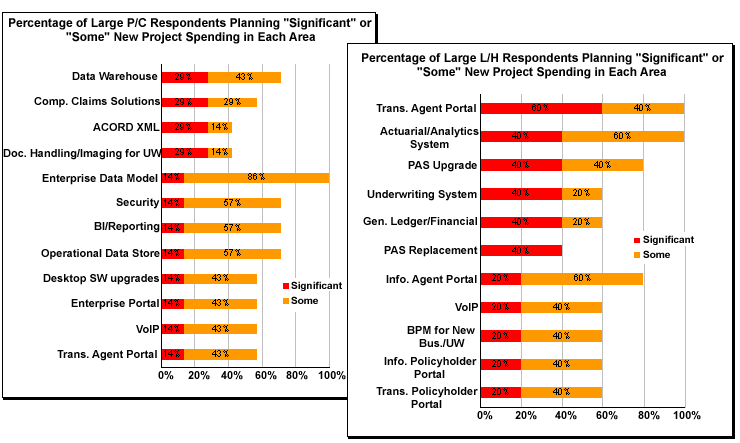Boston, MA, USA November 27, 2006
Celent's fourth annual survey of senior IT executives finds increased focus on strategic spending to meet market demands and some concern over a softening property/casualty market.
In the fall of 2006, Celent surveyed 29 insurer senior IT executives to provide a deep information resource about priorities, behaviors, initiatives, and infrastructures at US insurers. Overall, the respondents represented US$50 billion in premium, or roughly 5% of the total US insurance market.
"There is continued focus on meeting market demands for speed to market and ease of doing business, and on new projects involving core systems, data mastery, and distribution," says Matthew Josefowicz, manager of Celent's insurance group and author of the report, . "Budgets and staffs are generally flat or growing modestly, but strategic investments continue. However, there are some indications that large P/C insurers may be keeping their powder dry until they can gauge the impact of the softening market."
Other key findings include:
Top areas of significant new project spending vary by size and sector, but include initiatives focused on underwriting, claims, product development, and data mastery. Document handling, policy administration system replacement, ACORD XML adoption, and agent portals, and BPM all show up among the most common areas of significant new project spending. The report lists the top areas of "significant" and "some" new project spending by four size-and-sector groups of insurer respondents.

Web services/SOA is real. Adoption of enterprise service buses and UDDI infrastructures may not yet be widespread, but the average insurer had approximately 15 services live within its enterprise, and about half of the sample is using Web services/SOA for internal and external integration to enable new business and underwriting. ACORD XML continues to play a role in more than half of these initiatives.
The incremental mainframe migration is continuing, and Linux is becoming an important element of platform modernization along with Windows. While most large insurers rely on at least partially on mainframes for their core policy systems, the overall role of mainframes continues to wane gradually.
The 56-page report covers a broad range of areas, including detailed budget breakdowns, staffing plans and ratios, and an analysis of insurer activity in over 70 specific technology initiatives ranging from direct online sales to core systems to specific deployments of business process management and document management systems. The report contains 41 figures analyzing survey responses.
A table of contents and a list of figures are available online.





